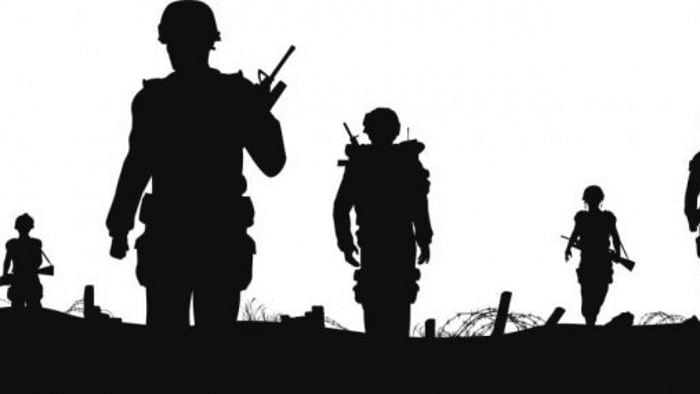
The adage, the proof of the pie lies in the pudding, has a correlation to war. War means big business opportunities and a wheelbarrow for many to rake in the moolah. Squalid tales of refugees trickling in, skyrocketing inflation, and food and energy scarcity are all intertwined. The images and coverage on television that are frequently broadcast into our living rooms focus on the human interest angle while masking another stark truth. While common Ukrainians and Russians are trying to keep their heads above water, along the trans-Atlantic and in parts of Europe, champagne corks could be popping as the defence industry makes a killing. The cause celebre: the US moving tanks and armoured vehicles to NATO’s eastern flank; the British and French governments planning to supply modern battle tanks to Ukraine.
Thus, a gruesome war escalating often and prolonging for months thrives as a profitable industry for arms companies and military hardware suppliers. Studies reveal that the Pentagon alone spent $14 trillion in the two-decade-long war against terror in Afghanistan. Beneath the gore and eradication, defence contractors, weapons suppliers for troops, and fertile lobbyists all benefited. It was a win-win for many, and a lucrative arms market flourished. A ‘Cost of War’ project by Brown University estimated that weapons manufacturers cut their pockets by as much as $2.5 billion on lobbying firms during the decades-long imbroglio. Thus, beyond war lies the merchandising of arsenals and a booming industry.
Also Read | A captain's war on wounds
Russia’s ongoing invasion of Ukraine has provided a lucrative niche for American, European, and other weapon merchants worldwide. The inevitable retort of Washington and European powers was a backtrack to the days of arms merchandising. One can foresee the aftermath: massive profitability for arms dealers, akin to the Cold War decades. Thanks to the Ukrainian crisis, the global arms bazaar is now a jackpot for many arsenal suppliers. The US has reportedly delivered weapons worth $20 billion to Kiev to tackle the Russian onslaught. While current deliveries may be from the military's inventory, future replenishments provide a boost to arms manufacturers. More weapons deployed in the Russia-Ukraine conflict means more military spending.
It is not just gala time for European and American arms bigwigs. Germany’s decision to allocate around 2% of its GDP to rearm the Bundeswehr, or federal defence, may also be a money-spinner for global arms manufacturers. According to the Swedish International Peace Research Institute's (SIPRI) 2021 annual report, 10 countries monopolised over 90% of the world's arms trade. Both Raytheon and Lockheed Martin, acclaimed armament giants, have told their investors that the Ukraine conflict was good for business. Sales orders of arms biggies are zooming, their stock prices going north, weaponry hubs are planning to expand production capacities to meet burgeoning demands. To them, it hardly matters if nations burn, as investors laugh their way to the banks.
Russia’s unacceptable assault on Ukraine may be derided by many, but Kyiv’s Western patrons seem to enjoy the prolonged war. According to data released by the Kiel Institute for the World Economy, the US has supplied military equipment worth €18.5 billion to Ukraine. So, does the quagmire of war and the merchandising of arsenals make profiteering easier? Lockheed Martin, doing brisk business in tandem with the Ukrainian conflict, has seen its stock shoot up by 31% in one year, more than many consumer companies. Despite profit booking, shares of British arms major BAE Systems ballooned 53% in the last year, while those of French aircraft giant Dassault went up by 48%. A phenomenon many blue-chip companies are envious of in the uncertainty of the stock market.
We have seen that war is not a leveler. In the denouement, the world’s arms barons may continue to exploit human zest for devastating opponents and grabbing financial rewards. In most countries, arms dealers and politicians are known to cooperate tacitly. An escalating conflict also means an appreciation of the portfolio for many in the field. Former US President Eisenhower had predicted that the huge military-industrial defence machinery, with its insatiable appetite for profit, could only lead to unending war. Ironically, Eisenhower’s caveats were nearly accurate, and the same doctrine applied analogously to Russia. As during the Cold War, superpower rivalry boosted arms sales for pecuniary benefit, the cycle continues. In the boardroom of a global armament major, what is more important is how many Javelin anti-tank missiles were delivered at a whopping price to Ukraine to thwart advancing Russian formations.
(The writer is a commentator on politics and society.)